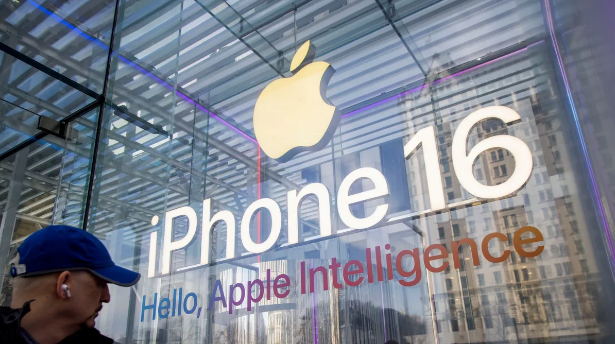AInvest Newsletter
Daily stocks & crypto headlines, free to your inbox
Apple’s Worldwide Developers Conference (WWDC), slated for June 9, 2025, is poised to be a
event in the company’s storied history as it is reportedly going to solve the AI dilemma of the company. With the company market capitalization standing around 3.09 trillion, slipping to the third largest company of the world after and , and its stock price at $206.86, innovations in the AI sector is needed for the company to regain dominance in the industry.The headline announcement—Apple opening its artificial intelligence (AI) models to third-party developers—signals a bold shift in strategy, aimed at sparking a renaissance of innovation across its app ecosystem. This move comes as
seeks to reclaim its footing in the fast-moving AI landscape, where it has lagged behind rivals like OpenAI and Google.By empowering developers with access to its AI tools, Apple hopes to enhance the appeal of its devices, drive financial growth, and solidify its competitive position. Yet, this ambitious pivot is not without risks, from technical hurdles to regulatory pressures, making WWDC 2025 a defining moment for the tech giant.
Apple’s AI Evolution: Context and Ambition

Apple’s journey with AI has been a gradual and challenging one, rooted in its focus on user-centric, on-device technologies. Early efforts like Siri, introduced in 2011, showcased the company’s interest in intelligent systems, but progress stagnated as competitors surged ahead with generative AI breakthroughs.
The launch of Apple Intelligence in 2024 marked a renewed push, integrating AI into iOS and macOS for features like text editing, notification summaries, and image generation. However, the rollout exposed limitations—adoption has been sluggish, and technical missteps, such as inaccurate news summaries and quirky Genmoji outputs, have dented its reputation.
Opening its AI models to developers via a software development kit (SDK) is Apple’s attempt to turn the tide. Initially, access will be restricted to smaller, on-device models optimized for privacy and performance, while cloud-based systems remain proprietary. This aligns with Apple’s broader strategy of balancing innovation with control, a hallmark of its ecosystem since the App Store debuted in 2008. That earlier decision unleashed a flood of apps that transformed the iPhone into a global phenomenon, and Apple is banking on a similar outcome here.
The SDK will give developers access to Apple’s large language models, enabling them to build AI-driven features directly into apps. Think advanced chatbots, personalized content creation, or real-time language translation—all running locally on Apple devices. Compared to platforms like OpenAI’s GPT, Apple’s models prioritize efficiency and privacy, leveraging on-device processing to minimize data exposure. This could appeal to developers targeting security-conscious users, a niche where Apple has a distinct edge.
For developers, the opportunities are vast. Imagine fitness apps that adapt workouts using AI insights, or educational tools that craft bespoke lesson plans in real time. The app ecosystem could see a surge of creativity, mirroring the early App Store boom. However, Apple’s models lack the raw power of cloud-based alternatives, and the SDK’s initial limitations may frustrate developers used to more flexible frameworks. Apple must deliver robust documentation and support to bridge this gap.
Financial Stakes and Industry Impact
Financially, this move could be a game-changer. A thriving AI app ecosystem could boost App Store revenue, where Apple earns a cut of in-app subscriptions and purchases. Enhanced device functionality might also spur hardware sales, critical as iPhones, iPads, and Macs account for the bulk of Apple’s $391.06 billion annual revenue throughout 2024. In a saturated smartphone market, AI could be the differentiator that keeps Apple ahead of Android rivals.
Yet, the financial picture is complex. The App Store faces mounting regulatory pressure, with rulings like the U.S. decision forcing Apple to allow external payment links. This threatens its 30% commission model, potentially offsetting gains from an app surge. Privacy risks also loom large—AI integration could expose new vulnerabilities, clashing with Apple’s brand promise of user trust. A single misstep here could trigger a PR and financial backlash.
Apple’s AI pivot arrives amid a broader industry shift. Google and Microsoft have embedded AI deeply into their ecosystems, while open-source platforms democratize access for developers. Apple’s walled-garden approach—prioritizing on-device models—sets it apart but risks isolating it if developers find it too restrictive, which is also one of the reasons that has stagnated Apple’s AI development such as the delay of Siri improvements. Technical challenges abound, too: building AI that’s both powerful and privacy-preserving is no small feat, and early stumbles suggest Apple has work to do.
The competitive stakes are high. If Apple successfully conquer this barrier, it could leapfrog rivals, positioning itself as a leader in practical, user-friendly AI. But failure to execute—or to inspire developers—could cede ground to competitors, relegating Apple to a follower in the AI race.
Conclusion: A Future Hinged on Execution
Apple’s decision to open its AI models at WWDC 2025 is a calculated risk with transformative potential. Success could usher in a new era of innovation, bolstering its ecosystem and bottom line. But the challenges—technical, financial, and competitive—are steep. As the tech world tunes in, Apple must prove it can blend its signature control with the flexibility developers crave. The outcome will not only shape Apple’s future but also influence the trajectory of AI adoption across the industry. For now, all eyes are on June 9, 2025.
Expert analysis on U.S. markets and macro trends, delivering clear perspectives behind major market moves.

Dec.12 2025

Dec.11 2025

Dec.10 2025

Dec.10 2025

Dec.08 2025
Daily stocks & crypto headlines, free to your inbox
Comments
No comments yet